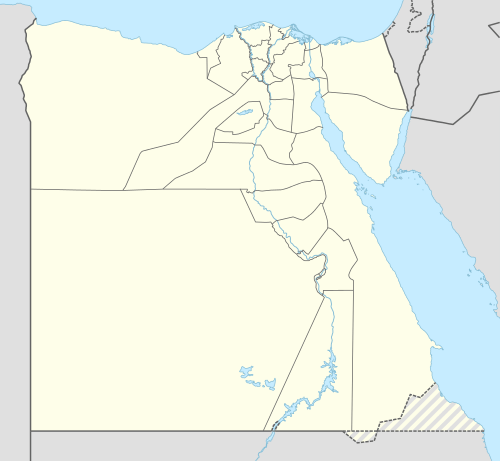Bir Kiseiba
| Bir Kiseiba | |
|---|---|
 Location of Bir Kiseiba in Egypt | |
| Location | Egypt |
| Coordinates | 22°41′00″N 29°55′00″E / 22.683333°N 29.916667°ECoordinates: 22°41′00″N 29°55′00″E / 22.683333°N 29.916667°E |
Bir Kiseiba is a Neolithic archaeological site that lies approximately 250 km west of the Nile in Lower Nubia. Excavated by Fred Wendorf, Romauld Schild, and Angela Close, Bir Kiseiba, along with Nabta Playa, has some of the earliest evidence for subsistence, permanent settlement, and more diverse technology from that of the Late Pleistocene. Wendorf and associates argue that cattle and pottery were here as early as any other place.
During the Late Neolithic period (ca. 5100-4700 b.c.), smooth ceramic ware appeared at Bir Kiseiba, some of which was black-topped, similar to the characteristic ware of the early Predynastic period in the Nile Valley.[1]
Controversy
Twenty two cattle bones were found in the Nabta Playa-Bir Kiseiba area. Excavators argue that these bones are from domesticated cattle, basing their claims on the reconstruction of the ecology showing conditions that were too poor to support large animals without human intervention, forming the basis of the Wendorf-Schild Model. Others have countered that an environment capable of sustaining gazelles and hares would have enough vegetation to support large animals like rhino and elephant, thus being able to support wild cattle as well. There is also no known ecological zone that contains only hares and gazelle, which suggests that faunal records of the area are fragmentary and incomplete.
Measurements of the bones from Nabta Playa and Bir Kiseiba morphologically have fallen within the range of aurochs.
Mitochondrial DNA has also done little to support the Wendorf-Schild Model beyond showing that the wild Bos primigenius could be the primary source for early domesticated cattle.[2]
References
- ↑ Bard, Kathryn (2007). Introduction to the Archaeology of Ancient Egypt. Malden, MA: Blackwell Pub.
- ↑ Brass, Michael (2013-07-01). "Revisiting a hoary chestnut: the nature of early cattle domestication in North-East Africa". Sahara (Segrate, Italy). 24: 65–70. ISSN 1120-5679. PMC 3783853
 . PMID 24077927.
. PMID 24077927.